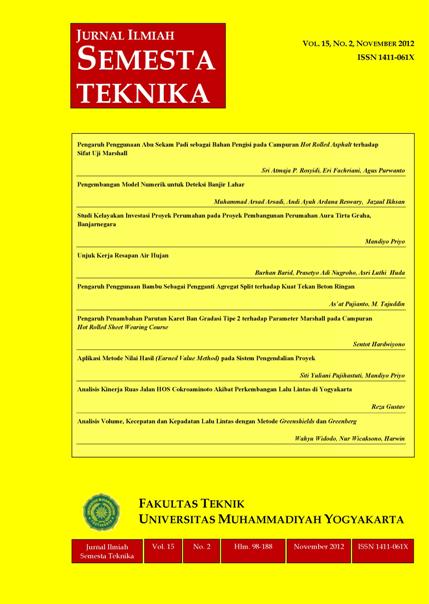Pengaruh Penggunaan Abu Sekam Padi sebagai Bahan Pengisi pada Campuran Hot Rolled Asphalt terhadap Sifat Uji Marshall
DOI:
https://doi.org/10.18196/st.v15i2.1321Keywords:
Rice Husk Ash, Marshall Test, HRA, filler materialsAbstract
Rice Husk Ash (RHA) has fairly high content of SiO2 and easily obtainable. It is inexpensive since it is the residual waste of the tile or brick combustion process that is not utilized properly. RHA has the potential to be used as filler in Hot Rolled Asphalt (HRA) since it has high flexibility mixture design. The influential characteristic of RHA is that it has fine aggregate fraction. This study aims to discover the physical properties of RHA, the characteristic of the Marshall test properties, the optimum bitumen content, and the economical comparison between the RHA-mixed HRA and the conventional one using stone dust filler. The results of this study indicate that the use of the RHA is able to increase the optimum bitumen content. In terms of economical comparison, the use of RHA as filler material is much more economical than using stone dust as filler.
Downloads
How to Cite
Issue
Section
License
Semesta Teknika is licensed under a Creative Commons Attribution 4.0 International License.
Authors who publish with this journal agree to the following terms:
- Authors retain copyright and grant the journal right of first publication with the work simultaneously licensed under a Creative Commons Attribution License that allows others to share the work with an acknowledgement of the work's authorship and initial publication in this journal.
- Authors are able to enter into separate, additional contractual arrangements for the non-exclusive distribution of the journal's published version of the work (e.g., post it to an institutional repository or publish it in a book), with an acknowledgement of its initial publication in this journal.
- Authors are permitted and encouraged to post their work online (e.g., in institutional repositories or on their website) prior to and during the submission process, as it can lead to productive exchanges, as well as earlier and greater citation of published work (See The Effect of Open Access).









